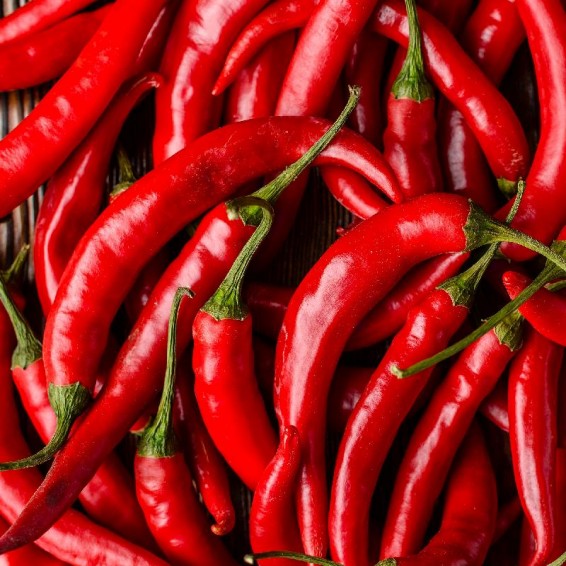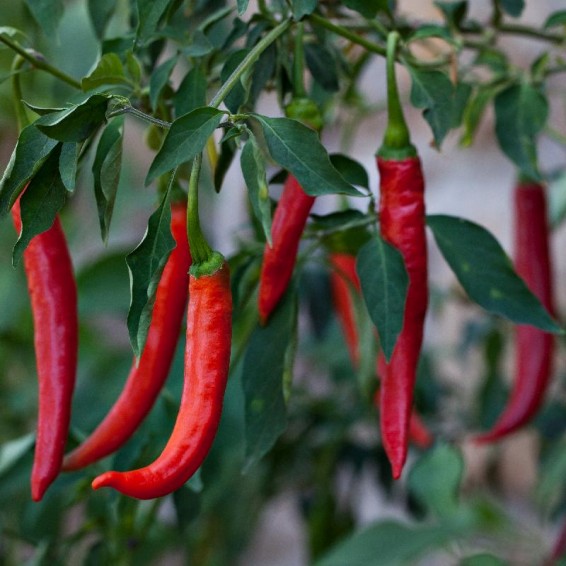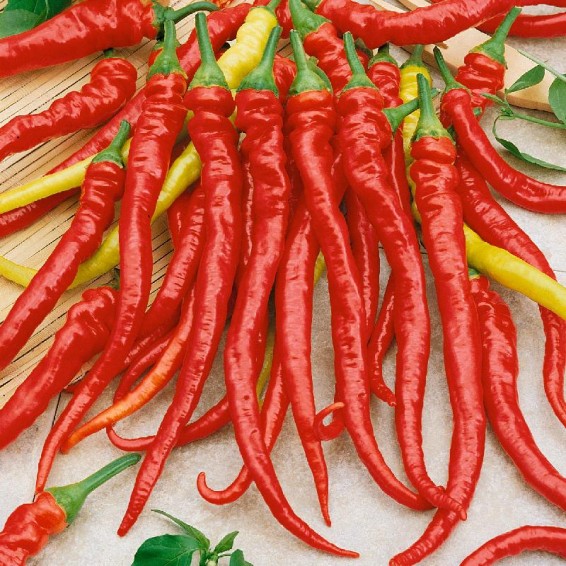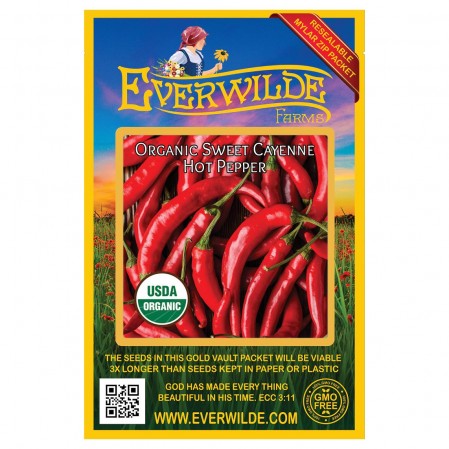Organic Sweet Cayenne Hot Pepper Seeds

- HOW TO GROW
- FAST FACTS
- REVIEWS
HOW TO GROW
Sowing: Start pepper seeds indoors in peat pots about 8 weeks before the last expected spring frost. Sow them 1/4" deep and keep the soil at 80-85 degrees F until germination; provide sunlight or a grow light for 12-16 hours a day. When the outdoor temperature reaches 60-65 degrees F during the day and no less than 50 degrees F at night, transplant the seedlings. Exposing the plants to the weather for several hours a day before transplanting may help prevent shock.
Growing: Keep the soil evenly moist and weeds under control; mulching the plants may help with this. If excess heat and sun cause the plants to wilt, provide shade.
Harvesting: Harvesting peppers is basically a matter of personal preference. Generally, the longer the peppers mature on the vine, the sweeter they will taste. Mature peppers, however, signal the plant to stop producing; if the peppers are picked when still at the green stage, the plant will go on producing. Always use a knife or scissors to remove peppers to prevent damage to the fragile stems.
Seed Saving: Keep in mind that peppers will cross pollinate with other varietes of pepper, so isolation or caging may be necessary to preserve genetic purity. Allow the pepper to fully mature, than cut it open and remove the seeds. Spread out the seeds to dry for about two weeks. Store the seeds in a cool, dry place for up to two years.
FAST FACTS
Latin Name: Capsicum annuum
Type: Open Pollinated, Hot Pepper, Warm Season
USDA Zones: 3, 4, 5, 6, 7, 8, 9, 10, 11, 12
Seeds per Ounce: 4,000
Planting Method: From Transplant
Sunlight: Full Sun
Height: 24 Inches
Color: Red, Green
Good quality seeds
It does seem like the packaging of their seeds helps prolong their shelf life. Seeds packed in other paper or plastic containers don't see to stay viable as long.
DESCRIPTION
HOW TO GROW
Sowing: Start pepper seeds indoors in peat pots about 8 weeks before the last expected spring frost. Sow them 1/4" deep and keep the soil at 80-85 degrees F until germination; provide sunlight or a grow light for 12-16 hours a day. When the outdoor temperature reaches 60-65 degrees F during the day and no less than 50 degrees F at night, transplant the seedlings. Exposing the plants to the weather for several hours a day before transplanting may help prevent shock.
Growing: Keep the soil evenly moist and weeds under control; mulching the plants may help with this. If excess heat and sun cause the plants to wilt, provide shade.
Harvesting: Harvesting peppers is basically a matter of personal preference. Generally, the longer the peppers mature on the vine, the sweeter they will taste. Mature peppers, however, signal the plant to stop producing; if the peppers are picked when still at the green stage, the plant will go on producing. Always use a knife or scissors to remove peppers to prevent damage to the fragile stems.
Seed Saving: Keep in mind that peppers will cross pollinate with other varietes of pepper, so isolation or caging may be necessary to preserve genetic purity. Allow the pepper to fully mature, than cut it open and remove the seeds. Spread out the seeds to dry for about two weeks. Store the seeds in a cool, dry place for up to two years.
FAST FACTS
Latin Name: Capsicum annuum
Type: Open Pollinated, Hot Pepper, Warm Season
USDA Zones: 3, 4, 5, 6, 7, 8, 9, 10, 11, 12
Seeds per Ounce: 4,000
Planting Method: From Transplant
Sunlight: Full Sun
Height: 24 Inches
Color: Red, Green
Reviews
Review
Good quality seeds
It does seem like the packaging of their seeds helps prolong their shelf life. Seeds packed in other paper or plastic containers don't see to stay viable as long.








